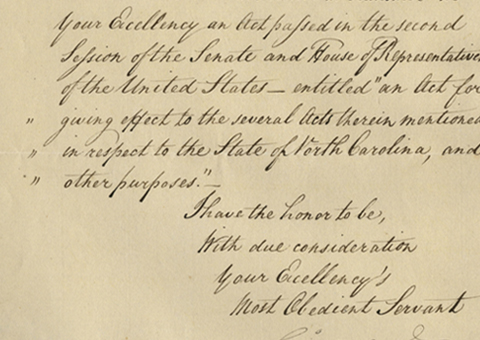The King Names the Successor to the Poet, Lord Byron




“The said George Byron, late Lord Byron, died without issue male on the 19th day of April 1824...”.
George Gordon Byron, 6th hereditary Baron Byron, commonly known simply as Lord Byron, made his fame not in the House of Lords, but as a poet and a leading figure in the Romantic Movement. Among Byron’s best-known works are the poems “She Walks in Beauty” and “When We Two Parted”, in addition...
George Gordon Byron, 6th hereditary Baron Byron, commonly known simply as Lord Byron, made his fame not in the House of Lords, but as a poet and a leading figure in the Romantic Movement. Among Byron’s best-known works are the poems “She Walks in Beauty” and “When We Two Parted”, in addition to the narrative poems “Childe Harold’s Pilgrimage” and “Don Juan”. He is regarded as one of the greatest British poets and remains widely read and influential.
Byron was celebrated in life for his self-imposed exile and love affairs, including one with his half-sister Augusta Leigh who gave birth to his daughter and one with Lady Caroline Lamb who famously referred to him as “Mad, bad and dangerous to know.” However, the modern sense of romantic character is often understood in terms of Byronic ideals of a gifted, perhaps misunderstood loner, creatively following the dictates of his inspiration rather than the standard ways of contemporary society. He travelled to fight against the Ottoman Empire in the Greek War of Independence, for which Greeks revere him as a national hero. He died at 36 years old from a fever contracted while in Missolonghi in that country.
Document Signed, London, May 23, 1825, investing the successor of Lord Byron with his titles and entitlements. George Anson Byron petitioned King, humbly representing that his ancestor Sir John Byron had been “advanced to the dignity of a Baron of this Realm,” and that the right to be invested with that office had been granted to “the heirs male of his body…That the same dignity descended by males claiming through males to the said George Byron, late Lord Byron; That the said George Byron, late Lord Byron, was on his accession…duly summoned to Parliament…and took his seat in the same; That the said George Byron, late Lord Byron, died without issue male on the 19th day of April 1824; The dignity of Baron Byron descended to the Petitioner…as the only surviving son of George Anson Byron, the paternal uncle of the said George Byron, late Lord Byron…” The King here responds.
“It is our will and pleasure therefore is that you make or cause to be made forthwith one Write of Summons under the Great Seal of our United Kingdom…to be directed to the said George Anson Byron by the name, style and title of Baron Byron…And for so doing this shall be your Warrant.” The document is signed by King George IV at its head, and at the conclusion is certified as “By His Majesty’s command” by Robert Peel as Home Secretary. Peel would go on to a famous career as Prime Minister.

Frame, Display, Preserve
Each frame is custom constructed, using only proper museum archival materials. This includes:The finest frames, tailored to match the document you have chosen. These can period style, antiqued, gilded, wood, etc. Fabric mats, including silk and satin, as well as museum mat board with hand painted bevels. Attachment of the document to the matting to ensure its protection. This "hinging" is done according to archival standards. Protective "glass," or Tru Vue Optium Acrylic glazing, which is shatter resistant, 99% UV protective, and anti-reflective. You benefit from our decades of experience in designing and creating beautiful, compelling, and protective framed historical documents.
Learn more about our Framing Services









































































































